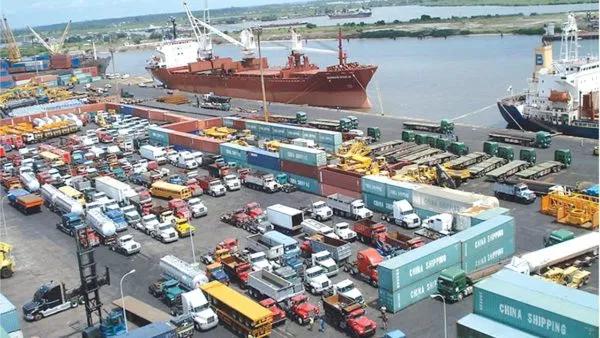The Lagos ports have become the epicentre of confusion as congestion is weighing on the port infrastructural capacity and exposing the inability of the concessionaires to handle cargo glut.
Unfortunately, the regulating agencies seem to have run out of ideas on how to stem the notorious tide.
Ordinarily, one would have thought that there would be dearth of cargo due to the global rage of COVID 19 but thankfully, the cargoes are coming but inability to latch on the increased cargo to stimulate the already ailing economy, is the greatest challenge.
Terminal operators, shipping line agencies, security operatives, professional associations have failed to live up to the billing.
The congestion in Lagos Port has assumed an embarrassing dimension as not only the terminals are filled up, the roads too have been taken over by trucks struggling to gain entrance into or out of the port.
Some concerned stakeholders expressed fears that the situation may not get any better soon if all the challenges fuelling the glut are not addressed.
Recent moves by the relevant agencies in the port to decongest the port met with brick wall owing to many factors working against the success of such moves.
The concerned agencies have been doing more of talking than action anyway. Too many excuses for not doing the right thing.
The operators too do not help matter as most of them admit cargoes into the port without adequate handling equipment to handle the increasing traffic.
Vessels can no longer berth due to the fact that terminals are filled up to the brim with little or no space for additional containers to come in.
This, freight agents have blamed on inadequate manpower and handling equipment on the side of terminal operators. They were accused of not being able to meet with the demand of importers willing to take delivery of their cargoes.
A source recently confided that a vessel meant for ENL Consortium was transferred to Green View Development Nigeria Limited for lack of space to receive the vessel.
Containers in the port are now being block stacked to make space for incoming containers but all to no avail as the strategy falls short of capacity to tame the problem.
Containers are now arranged so much that there are up to nine containers high in block stacking.
This arrangement makes positioning of containers a herculean task which makes clearing and delivery process painfully slow.
Trucks entering the port to pick consignments or drop containers now queue in four lanes thereby occupying vital areas in the port as well as narrow the roads to and out of the ports.
The two access to the ports are encumbered by rehabilitation works.
While the construction of Oshodi/Apapa expressway does not help matter too because trucks are now condemned to taking only one direction, the rehabilitation of the Ijora bridge, which is the second access point, has greatly hampered movement in and out of the ports.
Stakeholders have continually lamented inadequate manpower and handling equipment among terminals operating in Lagos Port.
The stakeholders who are the clearing agents said they bare the brunt of the inadequacies of the terminals.
They accused the terminal operators of having to dump container positioning for offloading a vessel once one arrives because of lack of enough handling equipment and manpower to handle both operations simultaneously.
They argued that it is the same equipment used for container positioning that is deployed to handle vessel offloading.
In a recent chat with the Manager, Tincan Island Port Complex, Bello Abubakar, he adduced the congestion to more containers coming into the country than the number going out.
He declared that shipping companies have failed to take the directive of acquiring holding bays where empty containers would be kept.
According to him, efforts by the Nigerian Ports Authority to enforce the directive was always frustrated as most of the shipping companies give nonexistent addresses as location of their container holding bays.
He said most times, the ones whose addresses are correct, often do not have access roads. Hence, the empty containers are held at the back of trucks.
In a bid to drop the containers and get another job, the truckers will queue up on the roads to the port in a desperate bid to return the empties on time to avoid losing deposits paid by importers
Traffic managers along the corridor do not help matters too as they sometimes allegedly turn trucks back and make some at the back to chunt lines after collecting some money from them.
Abubakar added that the road construction is another factor militating against the evacuation of cargoes from the port.
Some truck owners too may have shunned the private holding bays because of the cost of parking a truck in the terminal and demurrage accruing for failure to move the trucks at the right time.
“If the shipping lines are mandated to acquire holding bays for containers and they are not living up to the task, should there be no sanction for such operator?
“In a situation where shipping lines give misleading information about their holding bays, are they too big than the government?” a stakeholder queried. As long as the relevant authorities take proactive steps to ease this congestion, the government will continue to lose valuable revenue to this monster.














